On the edge of a tiny road, in the countryside of the Eure department in Normandy, a small farm, all dressed in blue and white, spreads out its flourishing gardens in the harsh light of a cloudless day. A man has lived there for two years. A former trader now doing permaculture and seeking to set up a place of resilience and training to face the changes to come. Louis is working, on a farm where mint is growing happily, on experimenting with different techniques.
It is on this farm that I decided to start my journey of learning techniques related to permaculture, eco-construction, low-tech and herbalism. It is in this old building with traditional Norman architecture that I will lay the first stone of a journey towards a more ecological and respectful way of life. The interior of the main farm building has been completely redone. A large library with many treasures seems to be waiting for me. Outside, vegetable gardens and flower beds are spread around a barn all in red. A petroleum painting informs me Louis, made by the previous owners and which is slowly starting to deteriorate. Hay and straw are stored there as well as a large number of tools and objects collected everywhere. Louis wants to work on the barn to transform it into a large training room or yoga class. With upstairs a possible performance hall. For the moment the vegetable gardens have priority over the barn work. Beside a large pond bordered by reeds is the hunting ground of a group of swallows which nest under the beams of the barn. They fly over the water at full speed twirling with agility to the sound of a happy chirping. Behind the barn is the camping area and a freshly finished bread oven. It is still filled with sand which served as a support for the stacking of bricks. A large meadow with a small lake stretches out in the background. A magnificent walnut tree lives among the grass, venerable guardian of the place and witness to the passage of time. Beyond spreads out a small orchard of apple trees and the continuation of the meadow which lives peacefully without human intervention. On the other side of the house, there is a small forest as well as the enclosure for chickens, goats and dwarf sheep. They are fond of visits and delicacies. Apples or plums fallen from the trees will give them great pleasure. Next to it is another orchard mixing plum, apple, pear and cherry trees. And everywhere, flowerbeds, shrubs, aromatic or medicinal plants and tomato plants that seem to come out of the earth in the most incongruous places. The whole property is surrounded by a beautiful natural hedge of brambles and hawthorns where blackberries are adorned with a pretty dark color.
We are four wwoofers, four volunteers who came to help Louis at the beginning of September. The bulk of his work revolves around the maintenance of the vegetable gardens and orchards which provide him in high season with almost 70% of his fruits and vegetables. The other part of his work consists of arranging the space to make it a place for training in resilience techniques (permaculture, energy autonomy, waste treatment, low-tech …). On the roofs of a small workbench are four solar panels and three dry toilets were built by previous volunteers in different parts of the property. The installation and use of toilets is very easy to set up: a wooden support where a toilet seat is attached below which is a bucket to collect urine and excrement. After each use, instead of flushing the toilet, just throw a handful of sawdust or wood chips into the bucket to create a mixture suitable for composting. When the bucket is full, just empty it into the compost. The use of dry toilets allows a great saving of water, a better degradation of the stool (which degrades badly in water and therefore requires a long treatment in a purification station), no odor and the constitution of a natural resource making it possible to enrich the soil of the vegetable gardens. Louis also collects rainwater in large plastic tanks used for watering crops. A small phyto-purification space has been set up next to the barn where the gray water from the shower in the barn is treated by a passage through gravel and ceramic balls then by rushes, reeds and wild mints, plants capable to clean the gray water from the kitchen or the shower.
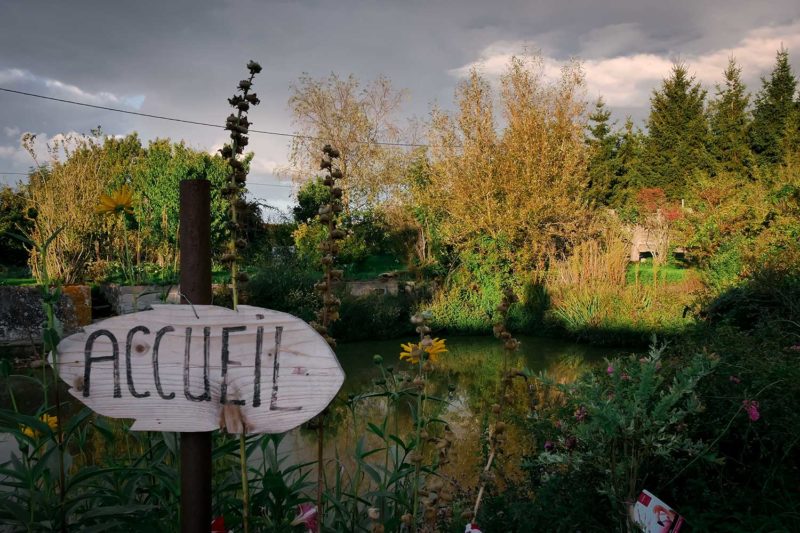
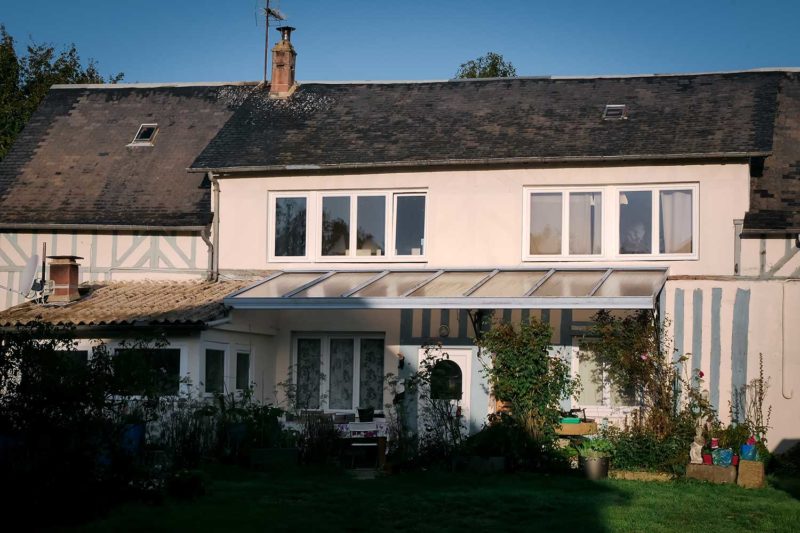
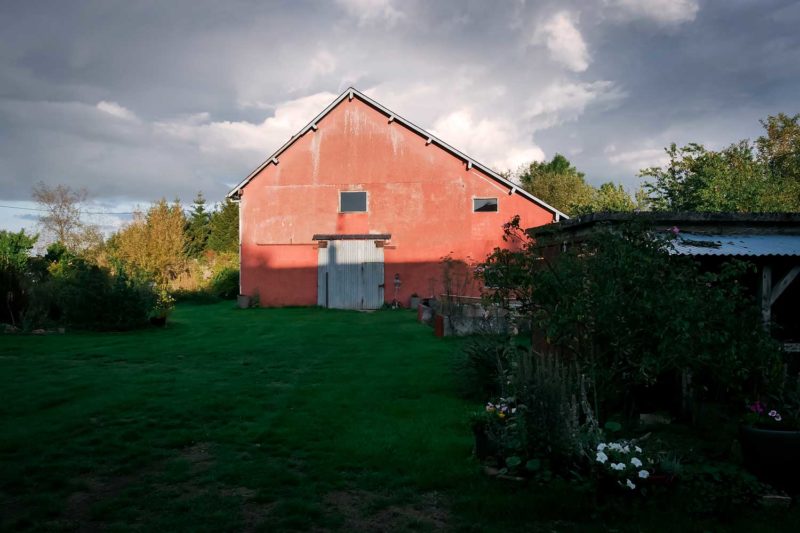
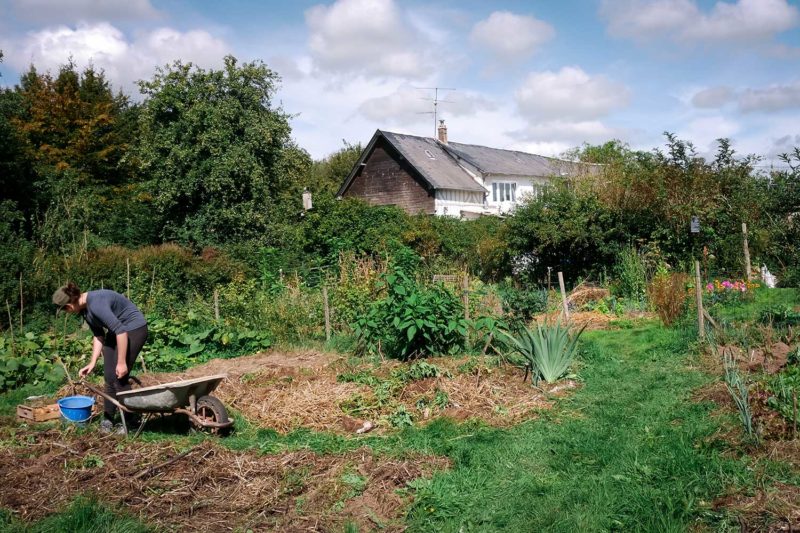
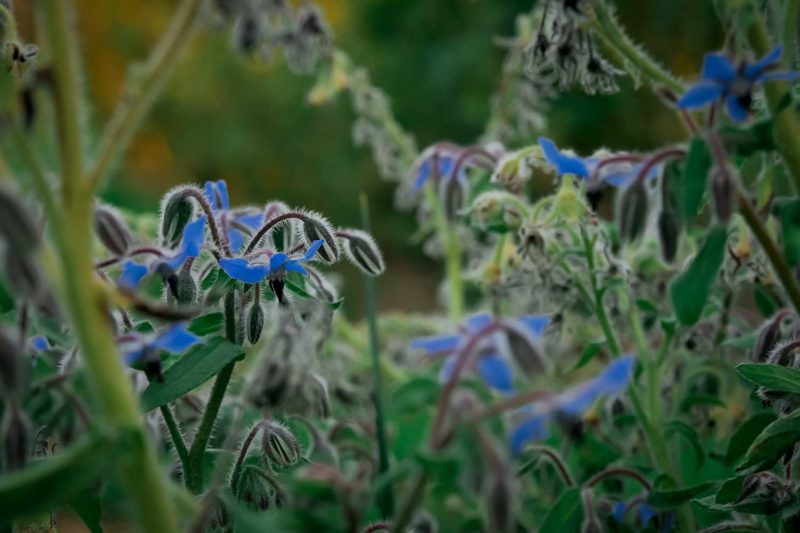
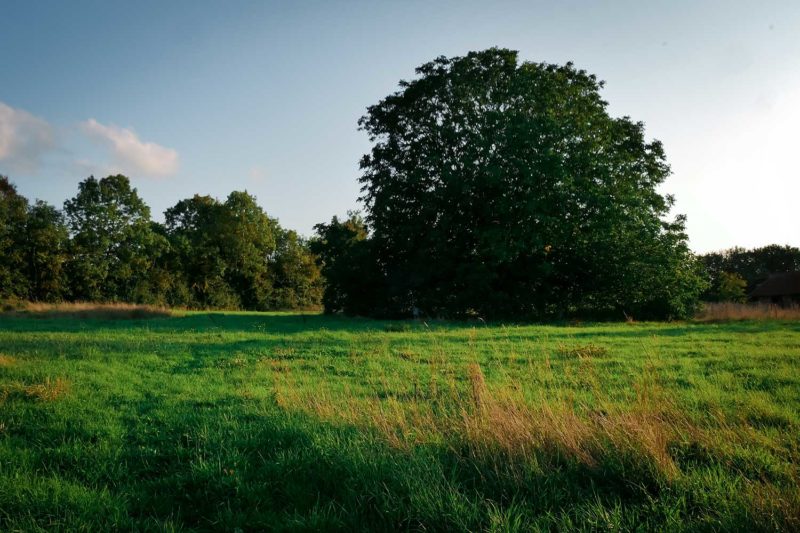
The main building as well as the farm. Work in a vegetable garden with transplanting salads and leeks and replacing the mulch to protect the soil. Many Borage plants with very pretty blue flowers dot Louis’ land. Borage is a plant producing a lot of pollen and therefore attracting bees and its flowers are edible. The magnificent walnut tree in the center of the meadow.
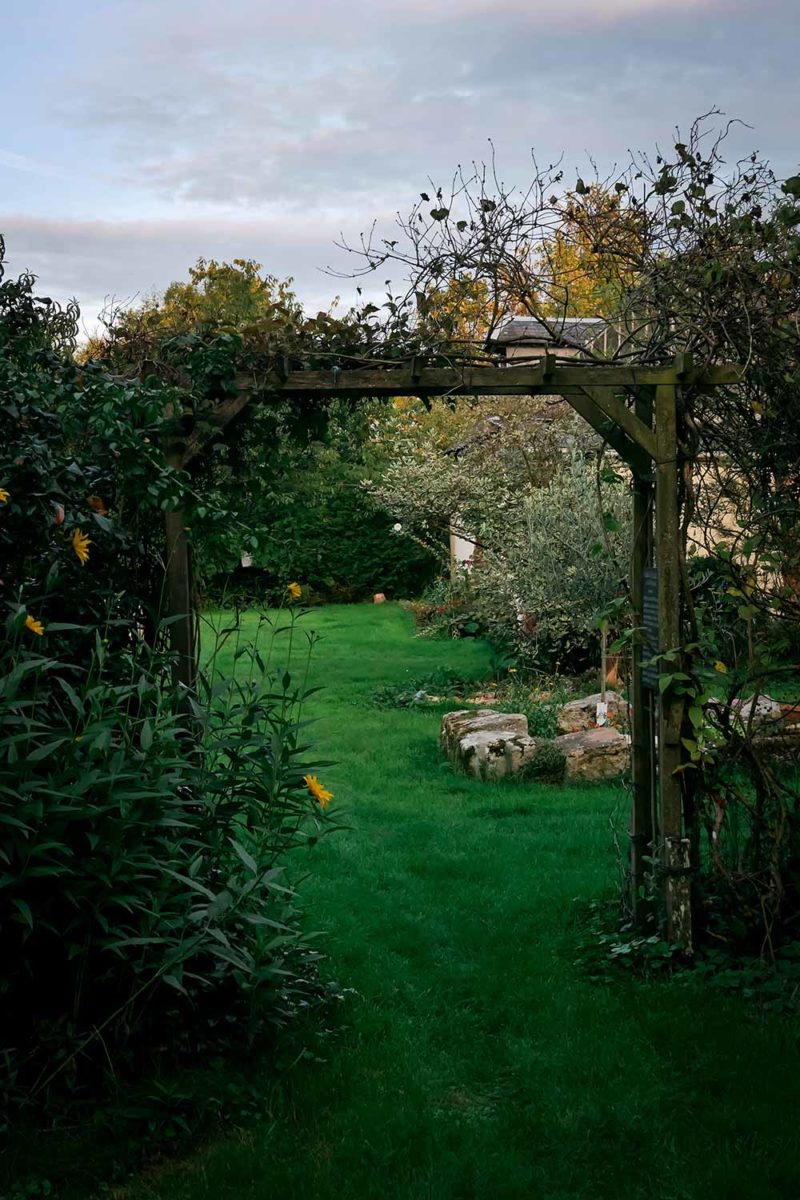
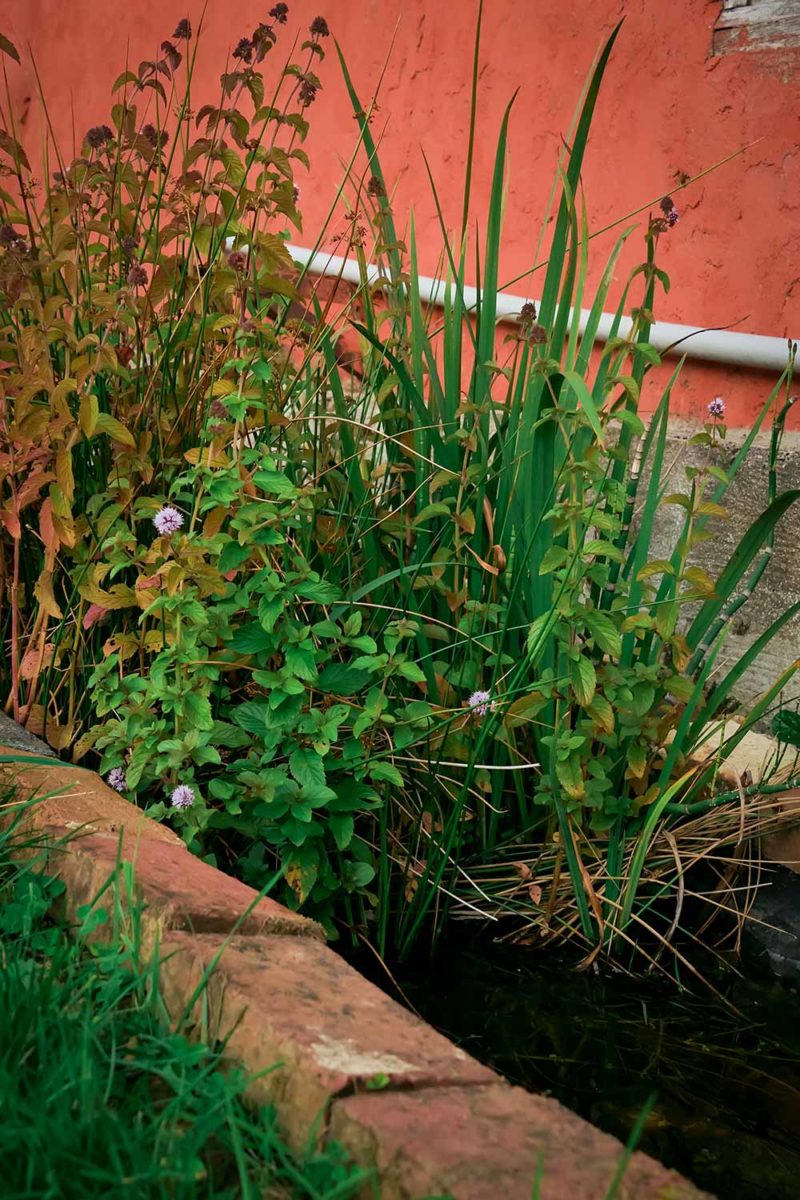
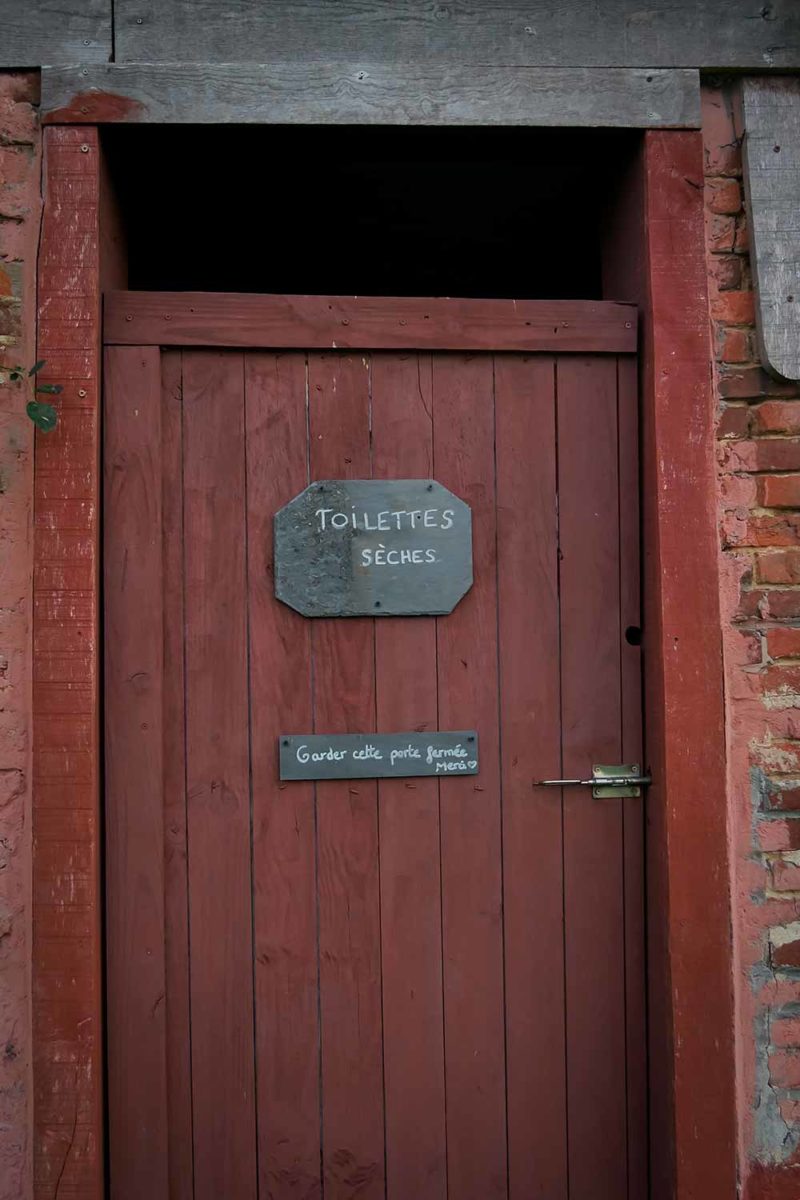
In the center, the small phyto-purification space and on the right the outside of one of the dry toilets. The red tint of the door was made with a flour paint. It is a traditional paint which is obtained by mixing flour, water, pigments, soap, linseed oil and iron sulphate and effectively protects the wood.
We list the names of the plants that spread out before our eyes. Zucchini, tomato, salad, lamb’s lettuce, oak leaf, hollyhock, yarrow, thyme, basil, sage, kiwi, leek, beetroot, black radish, poppy, St. John’s wort, mint, marigold … A mix of plants that s’ intertwine to form biodiversity spaces where plants for consumption, wild plants and plants for the soil and nature mix. In the two large vegetable gardens, planks covered with straw welcome crops and flowers. Pretty pumpkins, yellow zucchini, black cherry tomatoes, salads with colorful leaves, patties, leeks and potatoes in odd shapes are the bulk of the harvest in early September. Over the course of the day, we harvest, transplant and spend a lot of time in the orchards collecting apples, plums and blackberries in order to transform them into jams, compotes and jellies.
The surplus of apples, potatoes or jars will be used for bartering or as a gift. The concepts of exchange, barter, sharing and recycling are important to Louis who seeks to build a network of acquaintance around his farm. Jean, the farmer from the farm next door, regularly comes to lend a hand or to exchange crops. In Orbec, about fifteen kilometers from the farm, a mushroom farm offers at low prices, the soil of its crops that changes every week. A soil enriched with mushroom hummus that Louis places on the new beds of one of his vegetable gardens that he wants to expand. It is a good layer to enrich the ground before the establishment of cultures.
The days pass to the rhythm of the tasks to be carried out in the vegetable gardens, the transformations and the small miscellaneous jobs. The place is very calm. Few noises disturb the tranquility of life which takes place here quietly to the rhythm of the seasons. It is a simple, soothing life but with busy days and which vibrates with thoughts and projects in the making. Discussions about society, democracy, climate change enliven the meals and I spend my evenings leafing through Louis’ books on market gardening, biomimicry, trees and permaculture. There is so much to learn, to discover and I feel my mind racing a little, lost between the amount of knowledge to learn and the joy of discovering everything.
Huge white mounds dot the orchard floor behind the barn. The mushrooms sprouted almost in a day thanks to a good rain which did good to the ground hurt by the heat waves. Big, creamy white puffballs that come off with the pressure of the hand. By cutting them into thin strips the interior is revealed with a delicate texture that crumbles easily. It looks like cheese. I cut them into small cubes and mix them with aromatic herbs and olive oil to cook them on a pan. The texture is slightly rubbery but the very particular taste of the mushrooms enchants my taste buds. As I savor the dish as night falls, I appreciate the feeling of peace that envelops me. The joy of life is hidden in the simplest moments. Why would you want to go elsewhere?
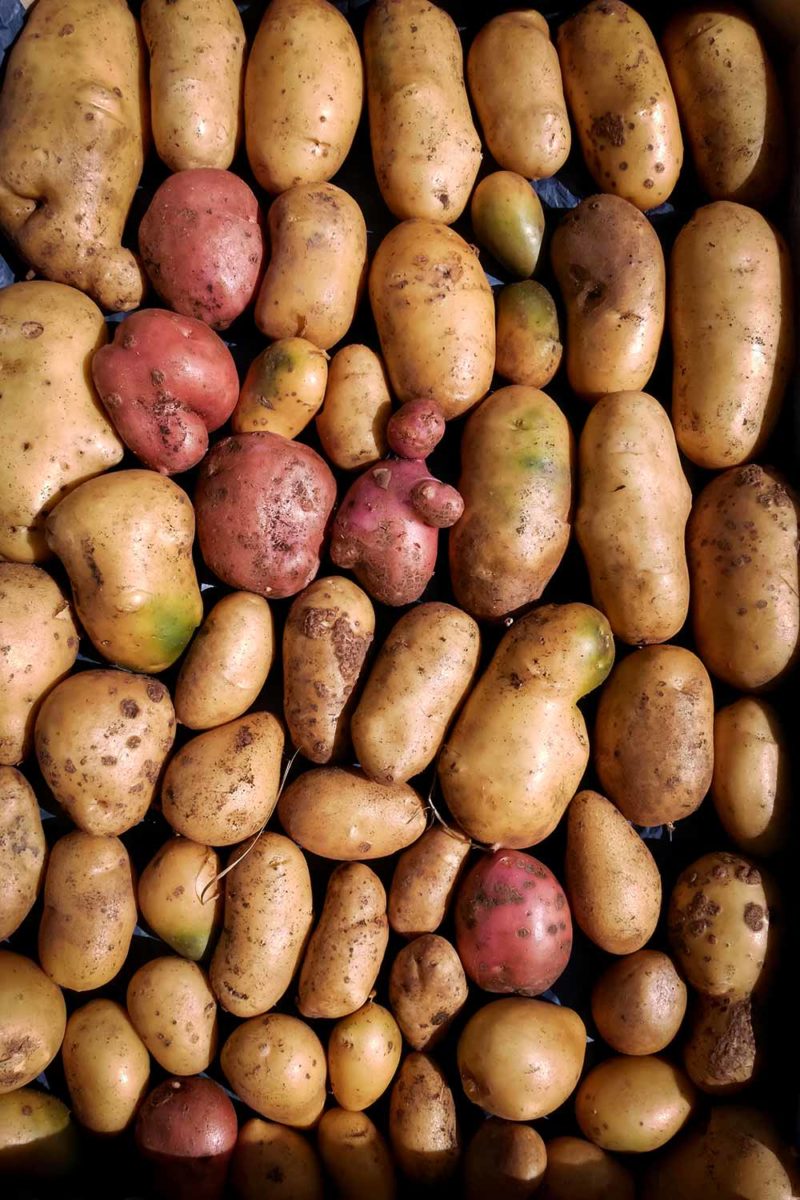
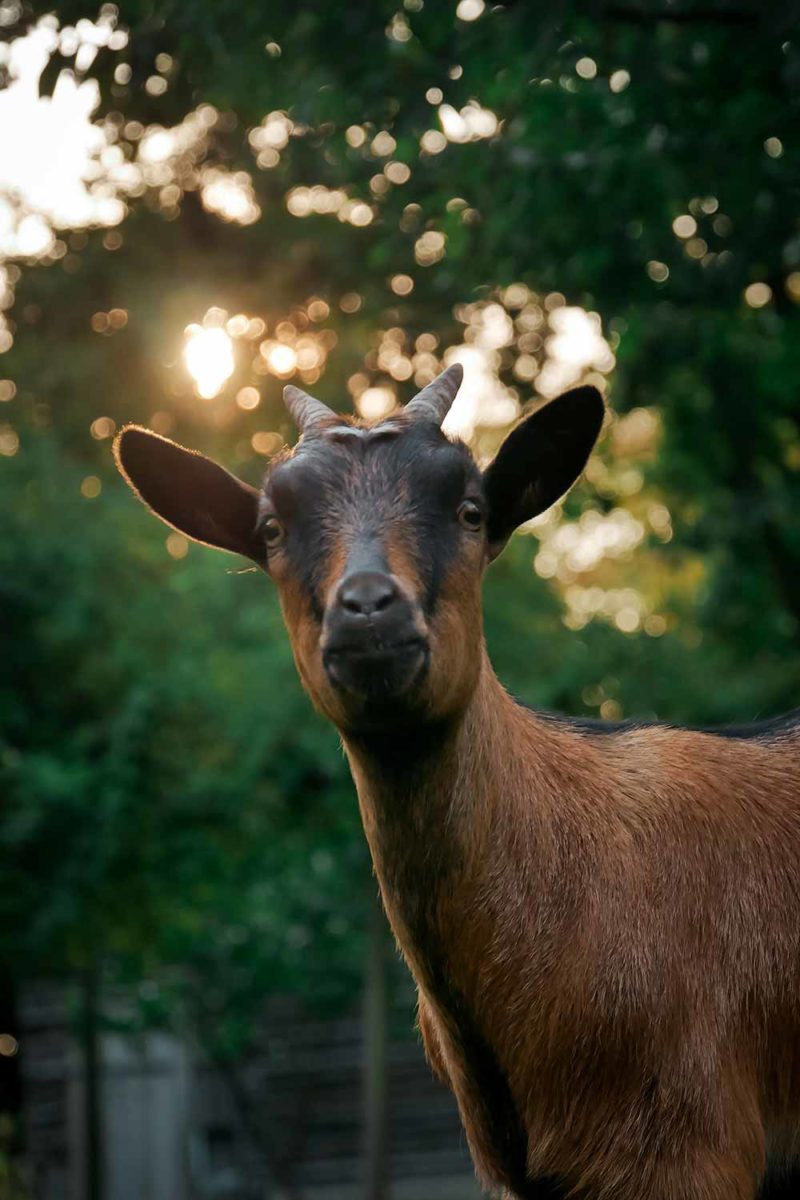
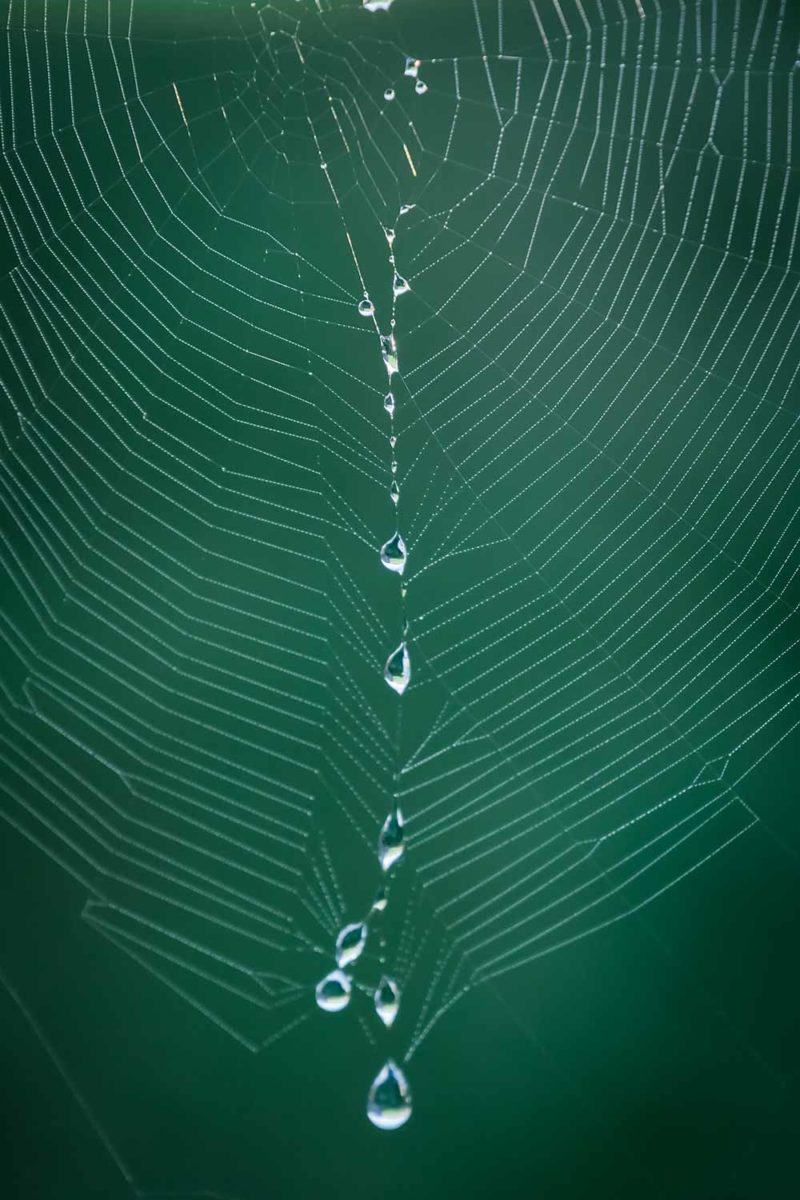
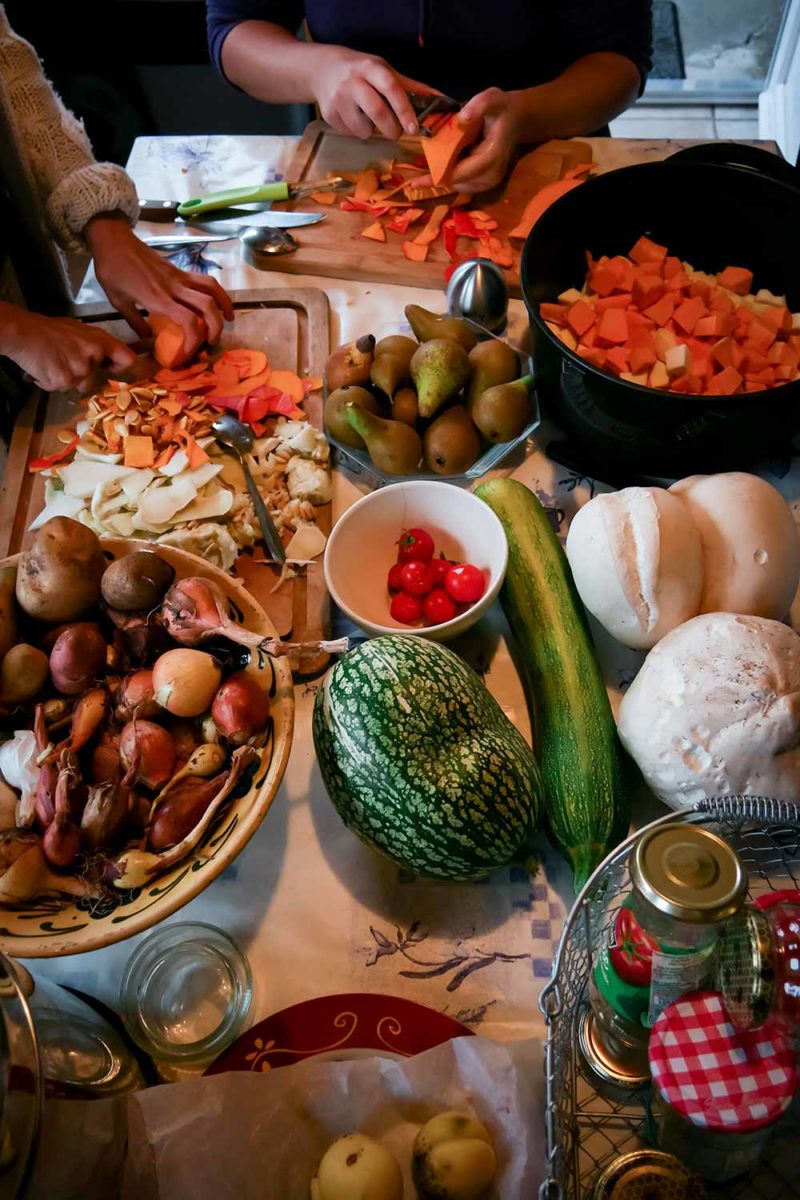
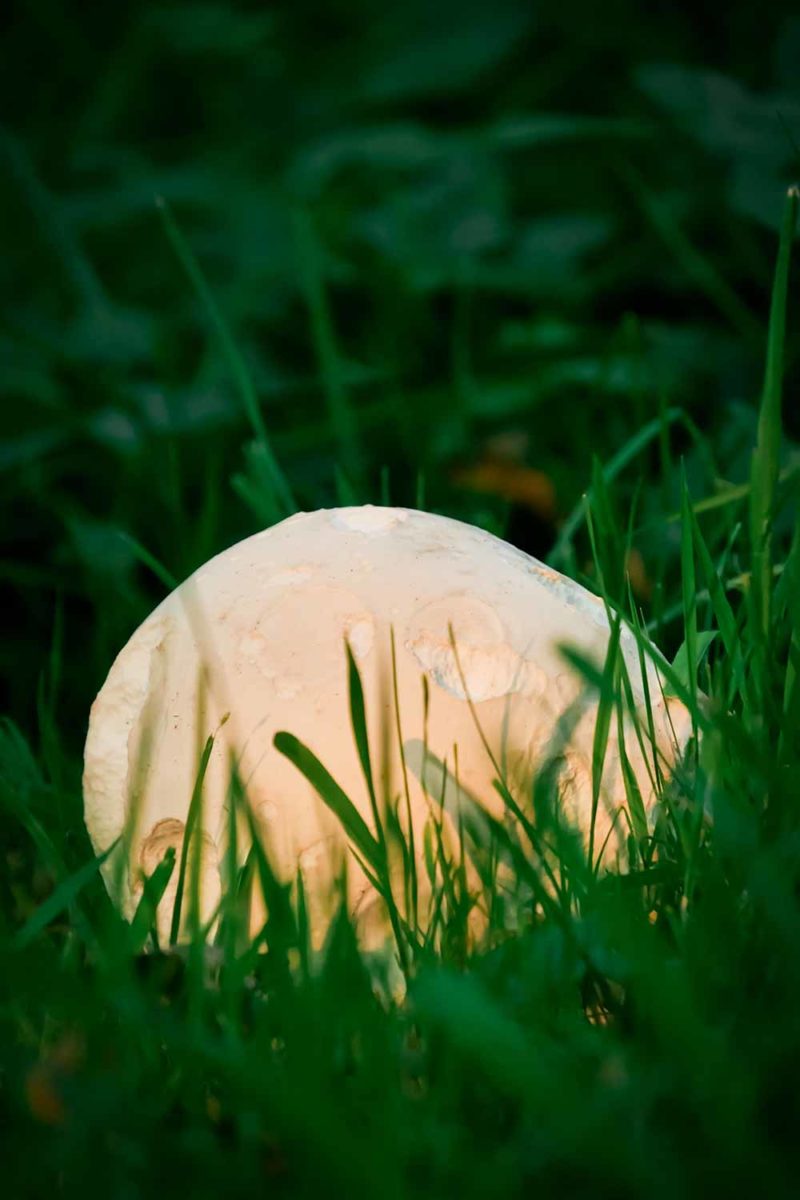
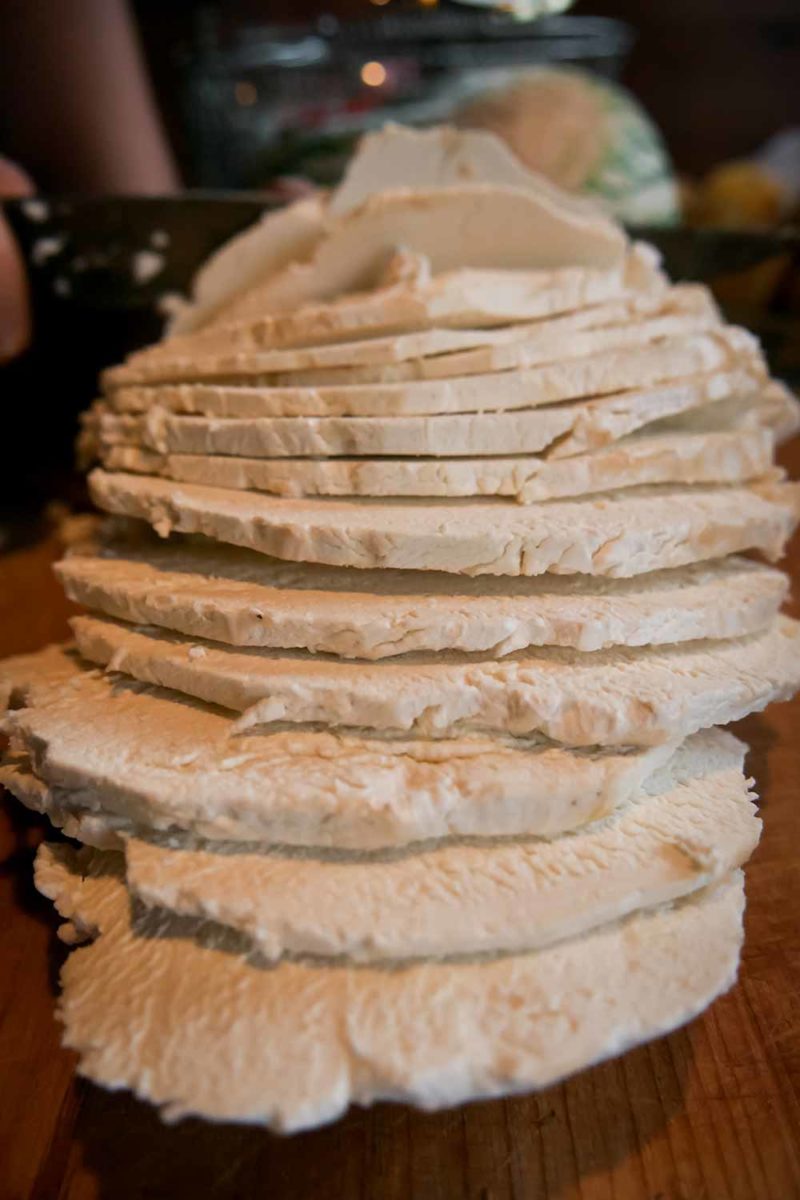
Harvest of potatoes, one of the goats, dew on a spider’s web, preparation of meals and cutting of puffball.
Note: In order to respect the right to privacy and anonymity on the internet, the names of people have been changed.
